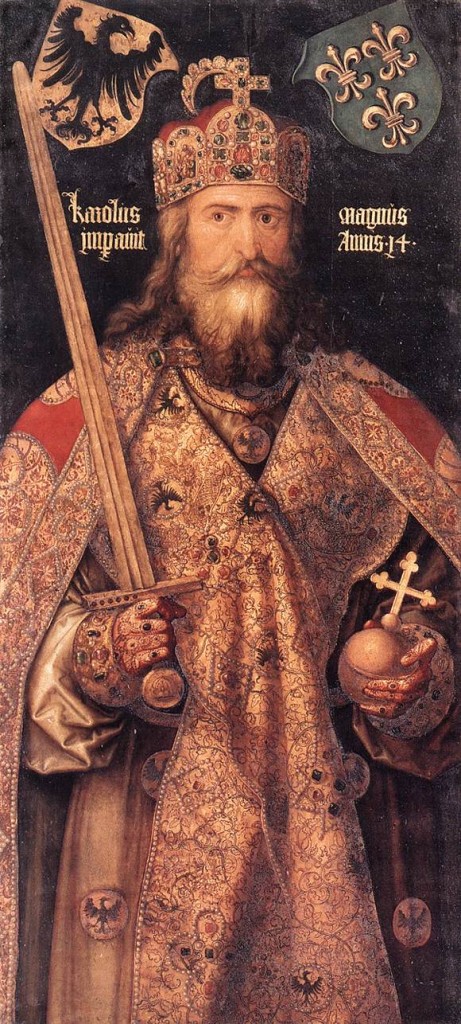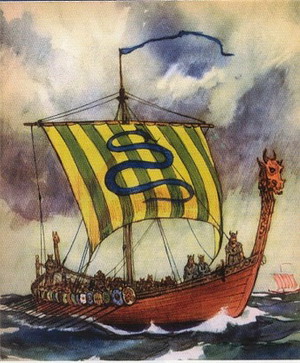In the course of my search for my long-lost ancestors, that also involves science using DNA research, I have come across one  of my great ancestors who happens to be the Pharaoh Ramesses III of the Twentieth Dynasty of the New Kingdom of Ancient Egypt. Ramesses III, also called the Great (0r Sesostris), was the son of the founder of the dynasty, liberator of Egypt, and a great conqueror.
of my great ancestors who happens to be the Pharaoh Ramesses III of the Twentieth Dynasty of the New Kingdom of Ancient Egypt. Ramesses III, also called the Great (0r Sesostris), was the son of the founder of the dynasty, liberator of Egypt, and a great conqueror.
This article is not about me, but what I have found in my research that I would like to share with you, that show Ramesses III having quite a few similarities to that of King Solomon of the bible.
In my previous articles on Ramesses III, such as The Hittite and Egyptian Brotherhood – Part I, Israel – Hittites Become One Heart and One Soul with Egypt, and What race was Ramesses III?, I had detailed my theory that Ramesses III is the son who is the blood/DNA product of this Brotherhood that is a hybrid blood line that was neither entirely Egyptian, nor Hittite, but a new and improved mixed DNA of both kingdoms in their attempt to unify these super powers into a new Israel.
I had detailed the recent DNA findings of this Pharaoh and the fact that his blood line is of a New Dynasty that was a result of an Egyptian–Hittite peace treaty concluded between Egyptian Pharaoh Ramesses II and Hittite King Hattusili III. In these articles you can see the connections I make between these two empires, along with the fact that while Ramesses III had ruled as Pharaoh, he did not dress entirely like the previous Egyptian Pharaohs, but had incorporated Hittite attire such as the infamous upturned shoes/sandals- that were ONLY worn by the Hittites at that time. This connection to Solomon and the Israelites through these upturned shoes/ sandals can be verified in- Matt. 7:26, where JEHU and the Israelites having shoes with upturned toes, while the Assyrians to whom they were paying tribute were wearing sandals with heel caps.
The next connection that I would like to make between the Israelites, King Solomon and Ramesses III is the ancient craft of Temple building, since King Solomon would be best known for the construction of Solomon’s Temple. Please let it be known that Ramesses III was also a great builder who had built several temples during his reign, with one of the most famous being the “Temple of Ramesses III,” also known as Medinet Habu. The “Temple of Ramesses III sounds very familiar to the Temple of Solomon, but the similarities between the allegorical character known as Solomon and the real king Pharaoh known as Ramesses III do not stop here.
The Temple of Ramesses III Looks Almost Exactly Like the Temple of Solomon Ramses III made his temple of Medinet Habu at the eastern gateway of Thebes as the administrative head of Amon. It was the last monumental temple to have been built-in the New Kingdom (20th Dynasty 1 198-1 167 B.C.).
Here is an actual areal photograph of the Temple of Ramesses III, or Medinet Habu.
Now below is a depiction of Solomon’s Temple. If you compare the image below with the picture above, they look like they are both built very similar to each other. Of course, The Temple of Ramesses III is real, and it may indeed be the Temple of Solomon that was also known as the temple of Amon in the house of Amon “; that of Re’, “the temple of Ramses III. in the house of Re’ “; that of Ptah, “the temple of Ramses III. in the house of Ptah,” and so on.
 Solomon was renowned for his other building projects, and like Solomon, Ramesses III was also known for the same thing. King Solomon had received wood from King Hiram of Tyre and imposed a compulsory labor service on both the Israelites and the foreign nations that were under his control. Ramesses III received assistance from his blood and royal alliance with the Hittites.
Solomon was renowned for his other building projects, and like Solomon, Ramesses III was also known for the same thing. King Solomon had received wood from King Hiram of Tyre and imposed a compulsory labor service on both the Israelites and the foreign nations that were under his control. Ramesses III received assistance from his blood and royal alliance with the Hittites.
Solomon was the son of King David and Bathsheba. Ramesses III was the said to be son of Setnakhte (or Setnakht) who was the first Pharaoh (1189 BC–1186 BC) of the Twentieth Dynasty of the New Kingdom of Ancient Egypt and his mother was Tiy-merenese, Teye-Merenaset,Tiye-Mereniset (Tiy, Beloved of Isis). The name “Mer en Set” is both an Egyptian Coptic Phrase and Initiatory Title from the Budge version of the Egyptian Book of the Dead – it means Beloved of Set. She may also be named Meryetamun, daughter of Ramses II. Mer sounds very familiar to “Mary or the Virgin Mary.” Ramses III had also undertaken several naval expeditions that appear to harmonise with those of Solomon. Both the Egyptain Empire and the Hittite Empires were forces to be reckoned with at this time. Hittite King Hattusili III’s daughter was a Babylonian Princess named Puduhepa who Ramesses II would then marry, and give her an Egyptian name, Maathorneferure.
It is said that Maathorneferure’s original name is unknown, but her Egyptian name translates as “One who sees Horus, the invisible splendor of Ra.” Just as the Queen of Sheba travelled to Jerusalem in search of King Solomon with a very great retinue, with camels that bore spices, very much gold, and precious stones; we also find that this Hittite princess left Hattusa, the Hittite capital in late 1246 BCE to meet her future husband, Pharaoh Ramesses II. She was accompanied by her mother and a huge contingent laden with gold, silver, bronze, cattle and sheep, and slaves.
Is this all a coincidence, or do all these connections prove that the formation of the Israelites was a result of the legal Peace Treaty of Brotherhood for all time made in Stone between the Egyptians and the Hittites (Kheta)? Does this help prove that there was a real King David in Ramesses II with his real life son known in the bible as King Solomon and in stone as Ramesses III? I will let you be the judge.

Moe is the founder of GnosticWarrior.com. He is a father, husband, author, martial arts black belt, and an expert in Gnosticism, the occult, and esotericism.








![How his body was found altogether uncorrupted after it had been buried eleven years, and how his successor in the bishopric departed this world not long after [698 A.D.] | Book 4 | Chapter 30 How his body was found altogether uncorrupted after it had been buried eleven years, and how his successor in the bishopric departed this world not long after [698 A.D.] | Book 4 | Chapter 30](https://www.gnosticwarrior.com/wp-content/plugins/contextual-related-posts/default.png)

Most of the Jewish history was borrowed from the Egyptian, which makes sense since they were slaves. This historical transmission is confirmed by Freud in “Moses & Monotheism,” Freud claims Moses was a transport of the Egyptian King Akhenaten and it was Akhenaten who ushered the One God, not Jewish, he worship the “sun” God.
“Moses and Monotheism:
Moses and Monotheism is a 1939 book about monotheism by Sigmund Freud, the founder of psychoanalysis. It shocked many of its readers because of Freud’s suggestion that Moses was actually born into an Egyptian household, rather than being born as a Hebrew slave and merely raised in the Egyptian royal household as a ward. It is Freud’s final original work and it was completed in the summer of 1939 when Freud was, effectively speaking, already “writing from his death-bed.”
no answer here?
I’ve gone down the path of Alan Watts and Realizing I’m Nebuchadnezzar the 2nd along with Pope Gregory the Great. I got lost down here and bored up there lol
Lion of Judah guide you?
I, Moe! I’ve been in reading you articles about the hittite pharaohs and I’m quite conviced about this matter. Yet, I have three questions: if Paduhepa was the Queen of Sheba, then how could she be David/Ramses II’s wife and, almost a century later, visite Ramses III? Couldn’t Paduhepa be Bathsheba, who was cleary a hittite as well? and, considering Ramses III to be Solomon, who was the Pharaoh whose daughter he married?